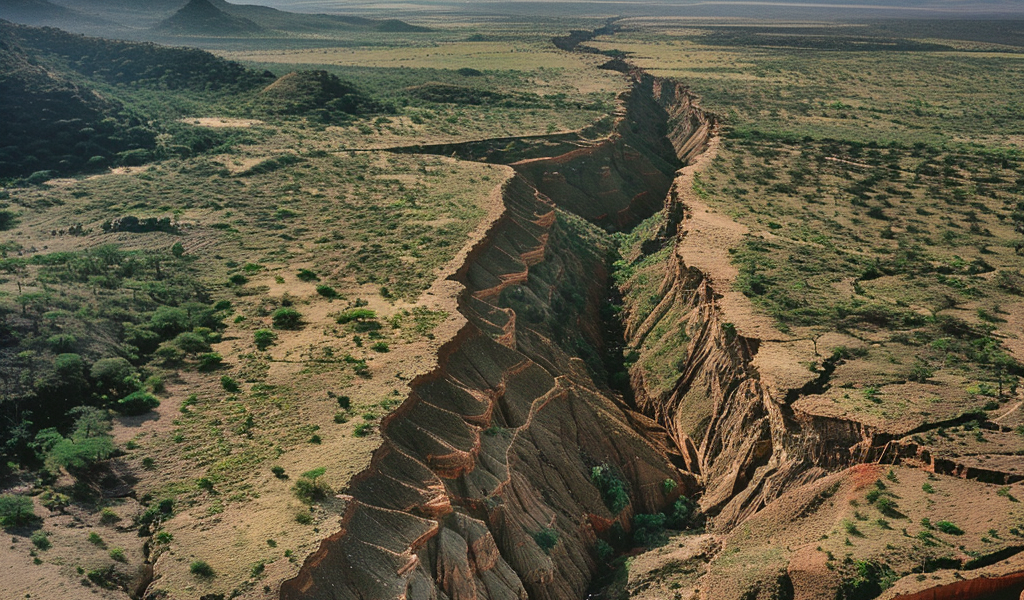The Earth is a constantly changing entity, and beneath our feet lies a complex network of tectonic plates that are in perpetual motion. This movement leads to a variety of geological phenomena, including earthquakes, mountain formation, and even continental drift. One of the most fascinating examples of this process is currently unfolding in Africa, where the continent is gradually splitting apart.
This geological event, while intriguing, is not something that poses an immediate threat to humanity. The split is expected to take tens of millions of years to fully develop, so it is unlikely that current generations will witness the dramatic transformation of the African landscape. However, the implications of this geological change could be significant for the future of the continent and its inhabitants.
The primary driver of this split is the East African Rift System (EARS), one of the largest rifts in the world. This extensive geological feature stretches thousands of kilometers across several countries, including Ethiopia, Kenya, Uganda, Tanzania, and Mozambique. As the rift continues to evolve, it will eventually separate the smaller Somalian plate from the larger Nubian plate, a process that has been ongoing for approximately 25 million years.
In 2018, a notable crack appeared in the Kenyan Rift Valley, capturing the attention of the public and sparking discussions about the potential for continents to tear apart. However, experts suggest that this fissure may not be directly related to the geological future of Africa. The crack could have been caused by soil erosion rather than tectonic activity. Lucía Pérez Díaz, a postdoctoral researcher in the Fault Dynamics Research Group at Royal Holloway University of London, noted that the formation of the crack raises questions about its relationship to the East African Rift.
As the rifting process continues, it is expected that a vast sea will eventually form, creating a significant geographical divide between the two plates. This slow and gradual process contrasts with the more dramatic imagery often associated with tectonic activity, such as a sudden split or catastrophic event. Instead, the separation of Africa into two distinct landmasses will unfold over millions of years, reflecting the Earth’s long history of change.
Historically, the Earth has undergone numerous transformations, with continents shifting and breaking apart over geological time. The current configuration of continents is a relatively recent development in the planet’s history. At one time, all landmasses were joined together in a supercontinent known as Pangaea. Over millions of years, tectonic activity caused this supercontinent to fragment, leading to the formation of the continents we recognize today.
The ongoing rifting in Africa is a reminder of the dynamic nature of our planet. While the changes may not be immediately visible, the processes at work beneath the Earth’s surface are constantly reshaping the landscape. For scientists, studying the East African Rift System provides valuable insights into the mechanisms of tectonic activity and the long-term evolution of the Earth’s surface.
As researchers continue to monitor the rifting process, they aim to understand the factors that contribute to the formation of rifts and the geological history of the region. This knowledge not only enhances our understanding of Earth’s geological processes but also informs predictions about how the landscape may evolve in the future.
In summary, Africa’s gradual split is a fascinating example of the Earth’s ongoing geological processes. While the immediate impact on human life is minimal, the long-term implications of this rifting could reshape the continent in ways that are difficult to imagine today. As we continue to study and learn about these geological phenomena, we gain a deeper appreciation for the complexities of our planet and its ever-changing nature.





